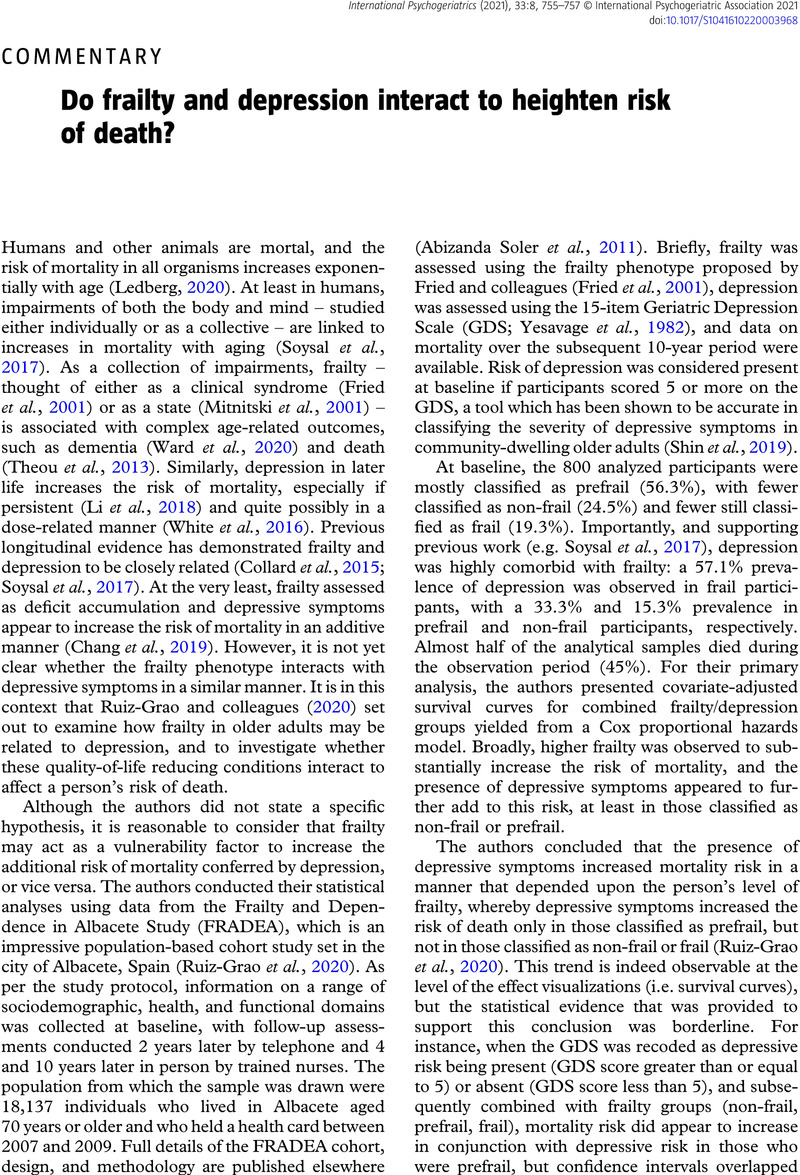Crossref Citations
This article has been cited by the following publications. This list is generated based on data provided by Crossref.
Nascimento, Priscila Pascarelli Pedrico do
Aprahamian, Ivan
Yassuda, Mônica Sanches
Neri, Anita Liberalesso
and
Batistoni, Samila Sathler Tavares
2022.
Fragilidade, depressão e mortalidade em uma coorte de pessoas idosas residentes na comunidade.
Revista Brasileira de Geriatria e Gerontologia,
Vol. 25,
Issue. 5,
Nascimento, Priscila Pascarelli Pedrico do
Aprahamian, Ivan
Yassuda, Mônica Sanches
Neri, Anita Liberalesso
and
Batistoni, Samila Sathler Tavares
2022.
Frailty, depression and mortality in a cohort of community-dwelling older adults.
Revista Brasileira de Geriatria e Gerontologia,
Vol. 25,
Issue. 5,
Hamada, Shota
Sasaki, Yui
Son, Bo-Kyung
Tanaka, Tomoki
Lyu, Weida
Tsuchiya-Ito, Rumiko
Kitamura, Satomi
Dregan, Alex
Hotopf, Matthew
Iwagami, Masao
and
Iijima, Katsuya
2024.
Association of coexistence of frailty and depressive symptoms with mortality in community-dwelling older adults: Kashiwa Cohort Study.
Archives of Gerontology and Geriatrics,
Vol. 119,
Issue. ,
p.
105322.



